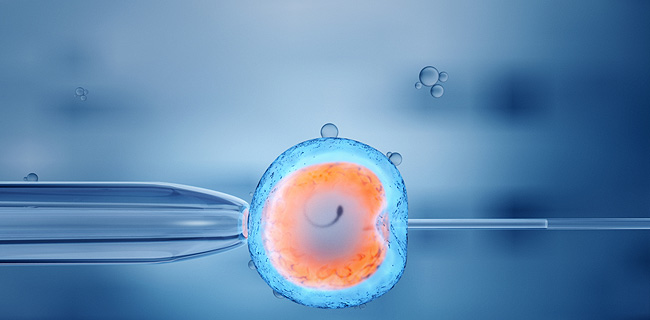
According to a report this week by MIT Technology Review, human embryos have been genetically edited for the first time in the United States, and with significantly greater precision than earlier efforts. The work used the gene-editing technique CRISPR, following a team in China who announced the first achievement of this feat in April 2015. The American research team was led by Oregon Health and Science University biologist Shoukhrat Mitalipov, who is known for being the first scientist in the world to create useable stem cells from cloned human embryos.
Though the results of Mitalipov’s work have not yet been published, according to this week’s report he was able to resolve crucial flaws in the earlier work. The initial publication by the Chinese team had found that CRISPR introduced editing errors and failed to effect the edits in some cells of the embryos. These limitations raised doubts about the therapeutic value of the technique.
But while the Chinese team had used “tripronuclear” embryos discarded from IVF clinics — embryos with three rather than two sets of chromosomes, which are not viable — Mitalipov injected the CRISPR gene-editing complex into egg cells along with the sperm used to fertilize them. In other words, his team created embryos expressly for the purpose of experimentation. This modification of the technique appears to have averted the earlier errors.
Mitalipov’s announcement thus represents not just the advent of experimental human gene editing in the United States but a significant step towards its actual use in a clinical setting.
The experiment seems to have been intended not as basic research into embryological development but a proof-of-principle for preventing genetic diseases using assisted reproductive technologies. His team recruited men affected by the blood disorder beta thalassemia, a recessive genetic disease that leads to anemia and other complications. By editing embryos they fathered, Mitalipov was showing just how fertility doctors might one day prevent genetic disease in the children of parents like these men.
Yet there remain reasons to doubt that gene editing will soon be used to prevent genetic disease in unborn children. Chief among these is the availability of preimplantation genetic diagnosis (PGD), a method used along with in vitro fertilization to determine which embryos are affected by disease-causing genes, so that they can be discarded.
Although PGD involves the deliberate destruction of human embryos, it is far less controversial than gene editing, both because it is not considered “germline engineering” and because prevailing bioethical views accord the embryo little or no moral status. Indeed, PGD is not only available but already often used during the in vitro fertilization process. And it is sure to remain a far cheaper option than gene editing.
It is a curious situation we find ourselves in when the prospect of curing genetic disease is seen as more controversial than selectively killing those affected by it. But that is the state of medical ethics and practice today.
This ethical lacuna was on full display in reactions to this week’s report. For example, bioethicist and Stanford law professor Hank Greely said on Twitter that the news is “not a big deal” because the Oregon team had produced mere “research embryos” that were not permitted to become babies. The embryos, having been created for the sake of scientific experimentation, were duly and responsibly destroyed rather than recklessly allowed to be born to walk among us.
Greely’s judgment is consistent with the morally incoherent bioethical consensus on human gene editing. The rationale for destroying the embryos created in these experiments is to prevent the birth of any controversial “designer babies,” or of children with birth defects or illnesses that the genetic engineering techniques might inadvertently cause.
The upshot is that experimenting on the genes of human embryos is perfectly acceptable, as long as it is done for basic research only and the subjects who stand to medically benefit from it — the embryos themselves — are killed. It is tantamount to deciding that the “responsible” way to deal with harms caused by experiments on human research subjects is to euthanize them. Only, in this case, the subjects are actually a class of human beings created exclusively to be experimented upon and then destroyed.
Preventing genetic disease is the usual justification provided by advocates of human gene editing. But the availability of alternatives like PGD means that the prevention of disease will likely never be more than a marginal application for technologies like CRISPR.[1]
Enhancement, however — the engineering of better children — is more likely to require gene editing. This is because the traits that parents might seek to enhance, like intelligence, athletic ability, or appearance, often involve many different genes that would be very difficult to select for all at once using PGD. However, scientists remain largely ignorant of what kinds of genetic changes would reliably alter such traits. So genetic enhancement, too, remains a distant and speculative possibility.
Experiments like Mitalipov’s are unlikely to lead directly to either the alleviation of the burden of genetic disease or to the creation of designer babies. But they will contribute to an ongoing and cruel instrumentalization of life, as more and more human lives are made, tinkered with, and discarded in scientific laboratories in the United States and around the world.
April 23, 2015
Exhausted by science and tech debates that go nowhere?